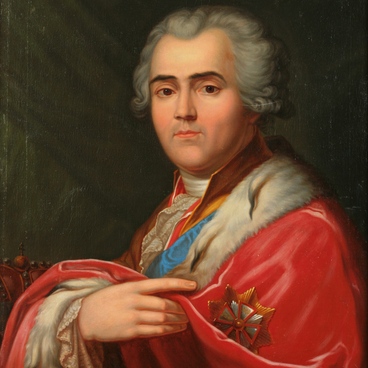In the XVIII century in Russia, the fate was decided by chance. The court singer could become Count Razumovsky. Natalia Demyanovna Razumovskaya (1690s-1762) is considered to be the ancestor of the count’s Razumovsky family. It is through the female line, because her husband did not live to great fame. He is remembered only by the fact that he shouted drunken: “What is the reason!” — where the surname came from.
So the Cossack Natalka Rozumikha turned out to be the mother of the favorite and the secret spouse of the Empress Elizabeth Petrovna, and was made a stateswoman. Her stay at the court left only funny legends about how she did not recognize her son in the brilliant attire of a courtier, and she fell to her knees in front of her reflection in the mirror because she took her new look for the empress.
Elizabeth Petrovna warmly welcomed her and placed her in the palace. But fashionable outfits and court life were not to Natalia Demyanovna’s heart. She soon put on her Little Russian dress, strictly adhered to the old customs and suffered from homesickness. Despite the “fortune” that fell to her family, Razumovskaya remained a simple Cossack. She did not visit the court often and not for a long time, as she dearly loved Little Russia and its customs. On one of the farms granted to her son Alexei, she built a manor called Alekseevschina.
During her arrival in the capital, Natalia Demyanovna posed for the German painter G. G. Heuser. His portrait of Rozumikha is kept in the State Historical Museum. It entered the Murom Museum in 1918 from the Uvarov estate, and was attributed in 1993. Razumikha was identified by the published engravings. Both portraits show a Cossack woman in a rich costume: a dress with lacing on the chest and a golden brocade tunic with sable fur. Similar portraits, once painted for numerous relatives, are kept in a number of museums (Chernihiv, Kiev). There are known engravings dating back to this portrait. Razumikha was a very popular character. As a possible author of the original, the Ukrainian artist Grigory Stetsenko (1710-1781) was first proposed, a number of sources call him the “court” artist of Rozumikha. There is a portrait of her in Kiev, which is attributed to Stetsenko, but it is also “copied” from the Heuser’s one. This portrait almost coincides with the original source, except for the little things: there is no red ribbon on the neck, as well as details at the brooch. The painting manner of Murom portrait differs: the painting is flat and schematic. The Razumovsky family was considered extinct in the middle of the XIX century.
So the Cossack Natalka Rozumikha turned out to be the mother of the favorite and the secret spouse of the Empress Elizabeth Petrovna, and was made a stateswoman. Her stay at the court left only funny legends about how she did not recognize her son in the brilliant attire of a courtier, and she fell to her knees in front of her reflection in the mirror because she took her new look for the empress.
Elizabeth Petrovna warmly welcomed her and placed her in the palace. But fashionable outfits and court life were not to Natalia Demyanovna’s heart. She soon put on her Little Russian dress, strictly adhered to the old customs and suffered from homesickness. Despite the “fortune” that fell to her family, Razumovskaya remained a simple Cossack. She did not visit the court often and not for a long time, as she dearly loved Little Russia and its customs. On one of the farms granted to her son Alexei, she built a manor called Alekseevschina.
During her arrival in the capital, Natalia Demyanovna posed for the German painter G. G. Heuser. His portrait of Rozumikha is kept in the State Historical Museum. It entered the Murom Museum in 1918 from the Uvarov estate, and was attributed in 1993. Razumikha was identified by the published engravings. Both portraits show a Cossack woman in a rich costume: a dress with lacing on the chest and a golden brocade tunic with sable fur. Similar portraits, once painted for numerous relatives, are kept in a number of museums (Chernihiv, Kiev). There are known engravings dating back to this portrait. Razumikha was a very popular character. As a possible author of the original, the Ukrainian artist Grigory Stetsenko (1710-1781) was first proposed, a number of sources call him the “court” artist of Rozumikha. There is a portrait of her in Kiev, which is attributed to Stetsenko, but it is also “copied” from the Heuser’s one. This portrait almost coincides with the original source, except for the little things: there is no red ribbon on the neck, as well as details at the brooch. The painting manner of Murom portrait differs: the painting is flat and schematic. The Razumovsky family was considered extinct in the middle of the XIX century.

